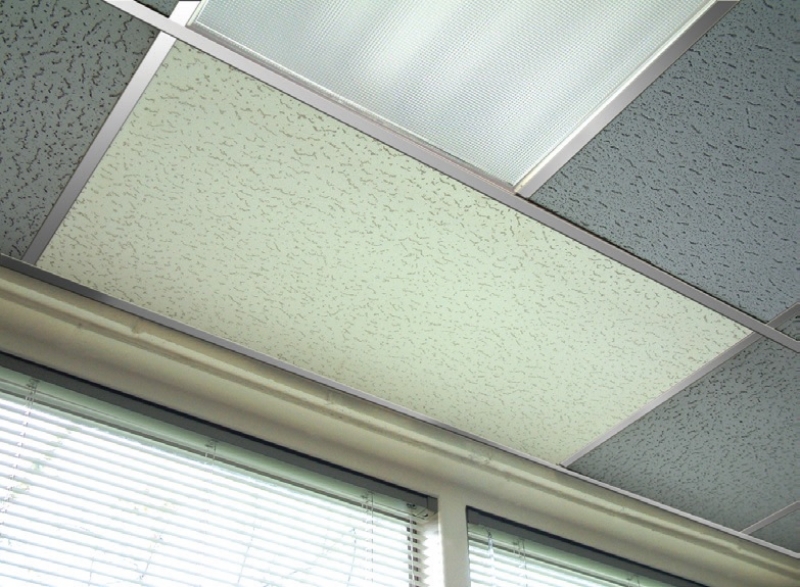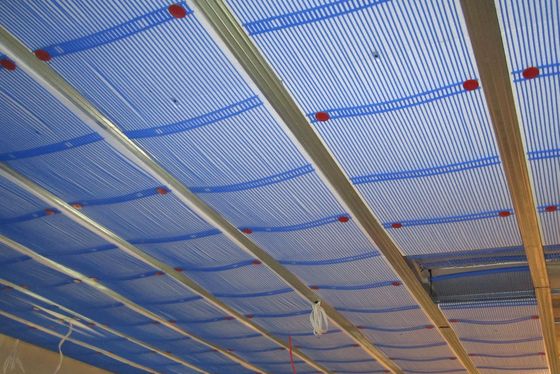If you’re looking for an efficient and modern way to heat your home, radiant ceiling heat panels might be the perfect solution. These panels offer a sleek, unobtrusive heating method that enhances comfort and energy efficiency. This comprehensive guide delves into the benefits of radiant ceiling heat panels, their features, installation tips, and maintenance advice to help you make an informed decision.

The Benefits of Radiant Ceiling Heat Panels
Radiant ceiling heat panels are becoming increasingly popular due to their numerous advantages. Here’s why they might be the ideal choice for your heating needs:
1. Efficient Heating
Radiant ceiling heat panels provide consistent and efficient heating by warming objects and people directly rather than the air. This method reduces heat loss and improves overall energy efficiency, making your space more comfortable.
2. Space-Saving Design
These panels are installed on the ceiling, freeing up wall and floor space. This design not only enhances the aesthetic appeal of your room but also allows for greater flexibility in furniture placement and room layout.
3. Even Heat Distribution
Radiant ceiling heat panel ensure even heat distribution throughout the room. Unlike traditional heating systems that can create hot and cold spots, these panels provide a uniform temperature, enhancing comfort.
Read too: Kitchen Lighting For A Vaulted Ceiling: Illuminating Your Space with Style and Functionality
4. Energy Efficiency
By heating objects and people directly, radiant ceiling heat panels minimize energy loss and reduce heating costs. They are often more energy-efficient than conventional heating systems, which rely on air circulation.
5. Improved Indoor Air Quality
Radiant heating systems do not rely on air circulation, which means they don’t stir up dust or allergens. This contributes to better indoor air quality, making them a great choice for individuals with allergies or respiratory conditions.
6. Quiet Operation
Radiant ceiling heat panels operate silently, unlike some traditional heating systems that can be noisy. This quiet operation ensures a peaceful and comfortable environment.
Features to Consider in Radiant Ceiling Heat Panels
When selecting radiant ceiling heat panels, it’s essential to consider several features to ensure you choose the right option for your needs:
1. Size and Coverage
Choose panels that are appropriately sized for the area you wish to heat. The size and number of panels needed will depend on the room’s dimensions, insulation, and heating requirements.
2. Temperature Control
Look for panels with adjustable temperature controls to customize the heating according to your comfort level. Some models come with thermostats or remote controls for added convenience.
3. Installation Type
Radiant ceiling heat panels can be installed as either surface-mounted or recessed. Surface-mounted panels are easier to install and can be placed directly on the ceiling, while recessed panels are embedded into the ceiling for a more streamlined look.
4. Material and Finish
Consider the materials and finish of the panels. They come in various styles, including aluminum, glass, and carbon fiber. Choose a finish that complements your room’s decor and provides durability.
5. Energy Efficiency Ratings
Check the energy efficiency ratings of the panels to ensure they meet your energy-saving goals. Look for models with high efficiency ratings to maximize your savings on heating costs.
6. Compatibility with Smart Systems
Some radiant ceiling heat panel can be integrated with smart home systems for enhanced control and automation. If you have a smart home setup, look for panels that are compatible with your system.
Installation Tips for Radiant Ceiling Heat Panels
Proper installation is crucial for the optimal performance of radiant ceiling heat panel. Follow these tips to ensure a successful installation:
1. Hire a Professional
For the best results, consider hiring a professional installer with experience in radiant ceiling heat systems. They can ensure that the panels are installed correctly and safely, adhering to all relevant codes and standards.
2. Plan the Layout
Before installation, plan the layout of the panels to ensure even heat distribution. Determine the best locations for the panels based on the room’s size and heating requirements.
3. Check Electrical Requirements
Ensure that your electrical system can handle the power requirements of the radiant ceiling heat panel. Consult with an electrician to verify that your wiring and circuit breakers are adequate.
4. Prepare the Ceiling
Prepare the ceiling surface for installation by ensuring it is clean and free from any obstructions. For recessed panels, ensure that the ceiling cavity is properly prepared and insulated.
5. Follow Manufacturer Instructions
Carefully follow the manufacturer’s installation instructions to ensure proper setup. This includes wiring connections, mounting procedures, and configuration settings.
6. Test the System
After installation, test the radiant ceiling heat panel to ensure they are operating correctly. Check for any issues with heat distribution, temperature control, and overall performance.
Maintenance and Care for Radiant Ceiling Heat Panels
To keep your radiant ceiling heat panels in optimal condition, follow these maintenance tips:
1. Regular Cleaning
Clean the surface of the panels regularly to remove dust and dirt. Use a soft, dry cloth to avoid damaging the finish. For recessed panels, ensure that the ceiling around the panels remains clean and unobstructed.
2. Inspect for Damage
Periodically inspect the panels for any signs of damage or wear. Look for issues such as discoloration, cracking, or malfunctioning controls. Address any problems promptly to prevent further damage.
3. Check Electrical Connections
Ensure that all electrical connections are secure and free from corrosion. If you notice any issues with the wiring or connections, consult with a professional electrician for repairs.
4. Verify Temperature Settings
Regularly check the temperature settings to ensure they are functioning correctly. Adjust the settings as needed to maintain optimal comfort and energy efficiency.
5. Monitor Performance
Keep an eye on the performance of the radiant ceiling heat panel. If you notice any changes in heating efficiency or comfort, investigate potential issues and consult with a professional if necessary.
Conclusion
Radiant ceiling heat panels offer an innovative and efficient way to heat your home, providing numerous benefits such as improved comfort, energy efficiency, and enhanced indoor air quality. By selecting the right panels, ensuring proper installation, and performing regular maintenance, you can enjoy the advantages of this modern heating solution for years to come. Whether you’re upgrading your current heating system or installing new panels, radiant ceiling heat panels are a smart choice for contemporary home heating




